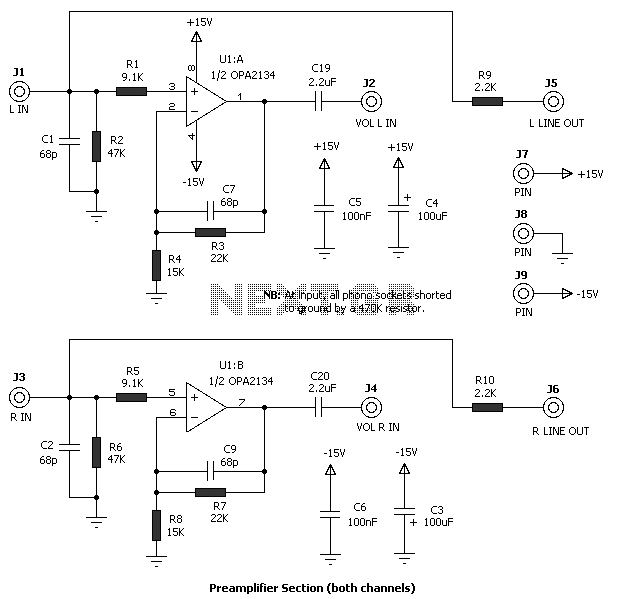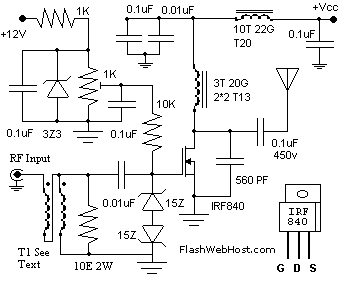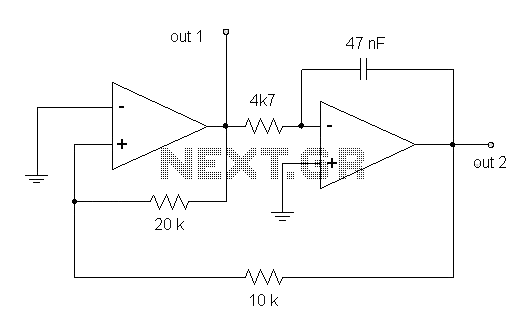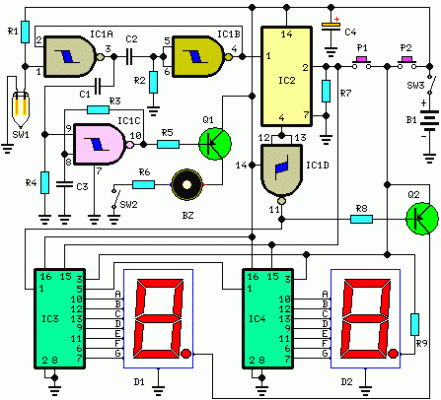
how to build a100 watt pure sine wave

The circuit presented in this article illustrates a straightforward method for constructing a compact inverter that is easy to assemble and offers the functionality of a pure sine wave inverter. The design can be easily modified to achieve higher output levels. The input stage, which consists of transistors T1 and T2, forms a discrete differential amplifier that enhances the low amplitude input signal from the sine generator. A significant drawback of sine wave inverters is the excessive heat generated by the output devices, which considerably diminishes the overall efficiency of the system. This design aims to reduce the current requirements of the circuit, thereby helping to keep the devices cooler and increasing the system's efficiency. Once implemented, this circuit ensures a clean, hassle-free pure sine wave output suitable for powering various electrical devices, including computers. Additionally, a power output stage utilizing MOSFETs is presented, which can be integrated with the aforementioned sine generator circuit to create a high-power pure sine wave inverter capable of delivering 150 watts.
The described inverter circuit is designed for simplicity and effectiveness, emphasizing the use of a discrete differential amplifier formed by transistors T1 and T2. This configuration serves to amplify the low-level sine wave signal generated by the sine generator, ensuring that the output maintains high fidelity. The choice of transistors is critical; they must be selected based on their frequency response and thermal characteristics to optimize performance and minimize heat generation.
To address the common issue of overheating in sine wave inverters, this design incorporates techniques to reduce current draw. This approach not only prolongs the lifespan of the components but also enhances the overall efficiency of the inverter. By minimizing thermal stress on the output devices, the inverter can operate more reliably under various load conditions.
The output stage, which employs MOSFETs, is tailored to handle higher power levels while maintaining the integrity of the sine wave output. MOSFETs are preferred for their fast switching capabilities and lower on-resistance, which contribute to reducing power losses and improving thermal management. The design allows for scalability, enabling modifications to increase the output power beyond the base 150 watts, depending on the application requirements.
This inverter circuit is versatile and can be utilized to power a wide range of electrical devices, making it suitable for both residential and commercial applications. Its ability to produce a clean sine wave output ensures compatibility with sensitive electronic equipment, including computers, which require stable power sources to operate effectively. Overall, this circuit design represents a practical solution for achieving efficient power conversion while addressing common challenges associated with sine wave inverters.The circuit provided in this article shows you a simple way of building a useful liitle inverter thats easy to build and yet provides the features of a pure sine wave inverter. The circuit can be easily modified for getting higher outputs. The input stage consisting of T1 and T2 form a discrete differential amplifier, responsible for boosting the
low amplitude input signal from the sine generator. As we all know that the biggest drawback with sine wave inverters is its RED HOT output devices, which drastically reduces the over all efficiency of the system. This will help to reduce the current requirements of the circuit and thus help to keep the devices cooler.
The approach will also help to increase the efficiency of the system. Once this is done, you can rest assured of a clean, hassle free pure sine wave output that may be used for powering ANY electrical gadget, even your computer. Another power output stage is shown below using MOSFETs, which may be used in conjunction with the above discussed sine generator circuit for making a 150 watts high power pure sine wave inverter.
🔗 External reference
The described inverter circuit is designed for simplicity and effectiveness, emphasizing the use of a discrete differential amplifier formed by transistors T1 and T2. This configuration serves to amplify the low-level sine wave signal generated by the sine generator, ensuring that the output maintains high fidelity. The choice of transistors is critical; they must be selected based on their frequency response and thermal characteristics to optimize performance and minimize heat generation.
To address the common issue of overheating in sine wave inverters, this design incorporates techniques to reduce current draw. This approach not only prolongs the lifespan of the components but also enhances the overall efficiency of the inverter. By minimizing thermal stress on the output devices, the inverter can operate more reliably under various load conditions.
The output stage, which employs MOSFETs, is tailored to handle higher power levels while maintaining the integrity of the sine wave output. MOSFETs are preferred for their fast switching capabilities and lower on-resistance, which contribute to reducing power losses and improving thermal management. The design allows for scalability, enabling modifications to increase the output power beyond the base 150 watts, depending on the application requirements.
This inverter circuit is versatile and can be utilized to power a wide range of electrical devices, making it suitable for both residential and commercial applications. Its ability to produce a clean sine wave output ensures compatibility with sensitive electronic equipment, including computers, which require stable power sources to operate effectively. Overall, this circuit design represents a practical solution for achieving efficient power conversion while addressing common challenges associated with sine wave inverters.The circuit provided in this article shows you a simple way of building a useful liitle inverter thats easy to build and yet provides the features of a pure sine wave inverter. The circuit can be easily modified for getting higher outputs. The input stage consisting of T1 and T2 form a discrete differential amplifier, responsible for boosting the
low amplitude input signal from the sine generator. As we all know that the biggest drawback with sine wave inverters is its RED HOT output devices, which drastically reduces the over all efficiency of the system. This will help to reduce the current requirements of the circuit and thus help to keep the devices cooler.
The approach will also help to increase the efficiency of the system. Once this is done, you can rest assured of a clean, hassle free pure sine wave output that may be used for powering ANY electrical gadget, even your computer. Another power output stage is shown below using MOSFETs, which may be used in conjunction with the above discussed sine generator circuit for making a 150 watts high power pure sine wave inverter.
🔗 External reference





